| Revista Umělec 2000/2 >> L´Origine du Monde (A Few Notes on One Taboo in Modern Culture) | Lista de todas las ediciones | ||||||||||||
|
|||||||||||||
L´Origine du Monde (A Few Notes on One Taboo in Modern Culture)Revista Umělec 2000/201.02.2000 Otto M. Urban | focus | en cs |
|||||||||||||
|
To Tomáš Pospiszyl
“If your vagina could talk, what would it say?” Eve Ensler, The Vagina Monologues, 1996 Rather than write an introduction, I will refer to the article Anus et Animus published in the previous issue of Umělec, the origin of which was basically accidental. At first, it was even intended as an ironic prospect. During the research process, however, a number of references and possible interpretations suddenly began to emerge. The theme lost its initial bizarre nature, and it then became evident that the subject should be approached with the utmost gravity. From that moment on, it appeared that the emerging text should first of all serve as primary information on the topic and then as an attempt at placing it into a specific context. This gave rise to the idea of a series of short texts with the purpose of recalling one chapter from the content-wise and formally critical area of modern art, that is to say artworks that are on the imaginary cutting edge and beyond.1 So other themes began to surface, themes not commonly the subject of writers but which do exist in modern art and should not be overlooked. References to works from the 19th century and a concise historical overview will attempt to document the link between works of the 19th and 20th centuries. By searching for such links throughout the entire history of modern art, new paths and trails begin to open up. Often, they may be dead ends, but even Strindberg’s gaffe at creating gold by blowing cigar smoke into water has had and still has its own meaning as a particular experience. I Representing the naked human body has been a part of the arts since antiquity. Works of this kind naturally appeared in primeval times, but they bore chiefly cult and religious significance. Antiquity propped the naked body up on a pedestal, making it the ideal and measure of perfection. The intricately sought after proportions of the human canon often represented the semantic and formal advancement of artwork, as such. Nudity itself was natural, lacking any taboos or prohibitions. Sex was not a shameful act, but it was not emphasized either (with the exception of works with openly erotic subjects found on Greek vases and Roman murals in Pompeii). Antiquity also knew the cult of the phallus, which was represented on numerous objects, murals and floor mosaics. It is interesting, in this context, that similar images of the worship of the vagina were almost non-existent at this time. In modern art, too, detailed representation of the vagina is a rare sight, however important the role this theme has played over the past 30 years. The Christian Middle Ages swaddled the human body under layers of clothing, and nudity was seen as exemplifying sinful behavior and pagan cults. The Renaissance brought about radical change. Nudity in the arts has arisen time and again from the 15th century until the present time. And it was during the 15th century that the first erotic artworks were produced, openly portraying various sexual activities. The expanding possibilities of reproduction, as it were, in graphic technology increased the overall turnout of these works. Often, these were the illustrations on trendy, erotic texts. At this time, the cult of the phallus also prevailed, expressing masculine power and dominance. The tradition of Renaissance erotic drawings and graphics essentially lasted until the first half of the 19th century. A number of recognized artists, such as Thomas Rowlandson, William Turner, Henry Fuseli, Francisco Goya, and J. A. D. Ingres, touched upon this theme in their work. Due to the increasing explicitness of depictions of sexuality, heated debates and disputes over pornography and its social and cultural context flared up at that time.2 II The beginning of realism in the 1850s brought about a new perspective on sexuality, which fully manifested itself in the arts in the following decade, giving birth to the famous Manet paintings Breakfast on the Grass (1863) and Olympia (1865). Both works caused a great scandal, and a number of critics accused Manet of pornography. The height of erotic openness, however, culminated in a painting by Gustave Courbet entitled The Origin of the World (L’Origin du Monde) from 1867. Courbet was a friend of Charles Baudelair and had been involved in erotic works since the 1850s. The Bathing Women (1853), for instance, caused much controversy. In the 1860s, Courbet made a whole series of erotic paintings. The former Turkish Ambassador to Saint Petersburg Khalil Bey commissioned Courbet for two paintings which today constitute the most essential works of erotic art. The first one was called Sleep (Laziness and Emotion) from 1866, which depicts two sleeping nude women in a moment just after making love. The painting’s majestic grandeur makes it a corner stone in the history of lesbian themes. The second commissioned work was the previously mentioned The Origin of the World, a work enmeshed in many stories and rumors. At the beginning of the 1980s, the painting was considered lost and it wasn’t until the mid-1990s that it was finally exhibited in the Musée d’Orsay in Paris. This work is not only exceptional because of its history, but also because it is the very first work that depicts in large detail the female sex, the vagina, as its main theme. Soon after The Origin of the World was finished, critic Maxim du Camp wrote: “The front view of a nude female is strongly connected with sentimentality and is rendered in a remarkable con amore style, as the Italians would say, which is the last word of realism. By whatever oversight the artist forgot to show feet, legs, thighs, belly, hips, chest, hands, arms, shoulders, neck and head.”3 Edmond de Goncourt later observed that the work’s beauty equals Corregio’s nudes. Félicien Rops also places the vagina at the center of his graphic works: “Rops’ art (…) brings to the front a parade of nude female figures with blasted ovaries, dried out mucous membranes and prematurely shrunken glands or spread hip-bones and foul shapes. (…) Rops’ pencil draws such phenomona as sanguine bursted Sex, brutal and gross, true and grandeur at the same time.”4 Drawing Serre-Fesse from 1878 shows the vagina locked up with a padlock, a kind of analogy to today’s piercing, which is confronted by a “see-it-all” penis on wheels. Between 1896 and 1897, Karel Hlaváček was working on illustrations for a book of poems by Arnošt Procházka entitled Prostibolo duše. The Illustration to the poem Deportee is one of the most expressive in the book. For Hlaváček, however, illustration was not just a mere copy of the literary artwork but an independent evocation of a specific “psychic mood.” The Deportee is the only drawing in the series whose preparatory studies were preserved. Comparing them reveals a lot about Hlaváček’s search for the most suggestive form. In a letter to Stanislaw Przybyszewski, Hlaváček described the Deportee: “So I conceived of the Deportee as an exile from sexual paradise. Why, the terrible thirst for former heavenly ‘purity.’ Sex turned its mouth into the mucous of female genitals, open in spasm.”5 The Deportee is about the voluntary punishment of one’s self, and Hlaváček’s own self-stylization is evident. “The madness of the nerves” was closely connected with sexuality for Hlaváček. His psychoanalytical approach of the symbol of the vagina makes the Deportee a founding accomplishment in its own right. A few years later, Alfred Kubin drew Death Leap (1901-2). As to its meaning, it is very similar to Hlaváček’s approach. It, however, boasts the caricature of a tiny and ridiculous male figure with an erect penis as he charges into the depths of the womb. Visual and literary works at the turn of the 20th century paid a great deal of attention to sexuality, which often involved themes describing pathological sexual dependency, leading to tragic and unavoidable collapse. Kubin describes the last fatal act of a man ravaged by lust, an act combining eroticism and death, Eros and Thanatos. But Kubin never shows the poor man, as he is destroyed by omnipotent woman, by a kind of pity. He shows the ridiculousness of a sexuality that was both execrated and worshipped.6 In its openness in perceiving sexual themes, surrealism surpassed even the turn of the century. Photography and especially film provided new impetus for the general spread of sex and eroticism. Following World War I, a number of limitations and preconceptions in the social position of women disappeared. New film stars and opera divas emerged, increasing the number of women in the art world to an extent that had never been seen before. This environment brought about opinions that looked at sexual themes from a perspective that had up till then been unheard of. This female perception of its own intimate world offered new views different from the existing dominant concepts which had linked art production, and, paradoxically, sexuality almost exclusively to men. Toyen’s painting Fear (1937) clearly documents this new openness: a stylized vagina is speared on a pole and human (male and child-like) fingers are struggling to reach up from behind a fence. The viewer is immediately drawn into the image to try and see what the still hidden figures are reaching for. Gradually, the viewer identifies with the central motif and experiences uneasy fear.7 III A new chapter of representing the genitals, and therefore the vagina, opens in the 1970s due to the increasing theoretical implementation of feminism. Female art at that time received new impulse and dynamic energy. The vagina became a significant and important symbol. In 1978, Judy Chicago organized an exhibition which was really a breakthrough called The Dinner Party in Los Angeles. The symbol of the vagina, rendered in dozens of variations, was related to important women in history. The vagina then became a prominent theme in a number of artworks. Eve Ensler’s staged a project entitled Vagina Monologues which first appeared in Here in New York and was met with the biggest response so far. Ensler wrote about it: “I was worried about vaginas. I was worried about what we think about vaginas, and even more worried that we don’t think about them… So I decided to talk to women about their vaginas, to do vagina interviews, which became vagina monologues. (…) At first, women were reluctant to talk. They were a little shy. But once they got going, you couldn’t stop them.”8 Over 200 women of various nationalities, professions, and sexual orientations participated in the monologues, including a number of well-known personalities such as actress Winona Ryder, Susan Sarandon, Glenn Close and Whoopi Goldberg. The theme of the vagina became more than a symbol of women’s art in the past 25 years. Its variously stylized representations can be found in the work of many female artists: Hannah Wilke, Annie Sprinkle and Nikki de Saint Phalle. The vagina even penetrated the consumer industry as a product called the vulvabed, a stylized bedspread shaped like the female sex organs, including a little pillow suggesting the clitoris. At the same time as the Rudolfinum Gallery in Prague was opening the controversial exhibition Angel, Angel in its main hall, while the small hall presented a solo show of the English artist Cathy de Monchaux. From the beginning of her career, she was involved in marginal sexual fetish themes and later in their connection with death. Critic Sue Hubbard wrote of her exhibition in Chisenhale Gallery in London in 1993: “Byron and Baudelaire could feel at home in this Gothic decadence of fin de siecle.”9 The motif of the vagina appears in de Monchaux’s work as well. Thanks to the various materials used, she achieves a peculiar contrast between velvet fineness and metal aggressiveness. Her representation of the vagina is no longer one of vulnerability, full of anxiety. It is self-confident and therefore dangerous. The 1990s brought about a debate on female pornography within the feminist environment, or pornography for women as a counter balance to the prevailing production, oriented solely on men. Veronika Bromová showed the mostly unknown face of the vagina in one of her photographs from the series Views (1996). Her anatomic study reveals the female sex in a position that would better grace the cover of a porn magazine. This contrast makes the scandalous nature of the work relative to a great extent. The natural character of this representation also distinctly defines the pornographic model. In an interview, Bromová said of her photograph: “I decided to shoot pussy because everybody has seen this spread, hairy pussy thousands of times in porno magazines. But I wanted to show it from the other side, so that the body is seen as something nice from the inside, too. I was interested in the moment of revealing the upper layer.”10 The reference to pornography is alluded to by the “brothel-like” make-up and tacky blond wig. The anatomic austerity and precision of the image also evokes a kind of peculiar worry and fear of cognition, vagina dentata, or the female sex with teeth rousing the male fear of castration.11 IV Joel-Peter Witkin’s photograph Phrénologue, San Francisco dates back to 1983. This work is part of the artist’s interest in the “dark side” of the human body. The face is hidden, and the central composition point is composed of the vagina, deformed by piercing. The manipulation of the sexual organs and human identity played a key role in Witkin’s work throughout the 1980s. Men in lonely poses, women and transsexuals make up a freakish gallery of all possible bodily variations and deformations. The combination of sex and pain, or the pain of sex, places Witkin in the same realm as Hlaváček and his conception of the Deportee. The atmosphere of reconciliation with one’s own differences leads to even greater emphasis being placed on it, to escalation that goes far beyond and makes relative the horror of the seen. Pierre Daguin also used the motif of an obscured face and provocatively exposed vagina in his series of photographs entitled The Nude. The scene, however, is stripped of Witkinesque masochistic escalation, evoking instead fatigue and malaise, oversaturation and disappointment.12 When the Prague City Gallery opened its permanent exposition at the Golden Ring House in 1997, they used the staged photograph Out of the Heart by Jiří Černický on the cover of the invitation. This work makes the distinction between the feminist interpretation of the body and the “other,” i.e. male, seem rather relative. Černický’s approach to the taboo theme is intimate despite its openness. Especially in light of his exhibition Allergic, in which he dealt with the issue of tortured women, the photograph Out of the Heart loses any vestige of scandle. And, quite clearly, the vagina has not yet uttered its last word in the arts. Let us then leave the end of this text open, too…13 Translated by Vladan Šír
01.02.2000
Artículos recomendados
|
|||||||||||||
|
04.02.2020 10:17
Letošní 50. ročník Art Basel přilákal celkem 93 000 návštěvníků a sběratelů z 80 zemí světa. 290 prémiových galerií představilo umělecká díla od počátku 20. století až po současnost. Hlavní sektor přehlídky, tradičně v prvním patře výstavního prostoru, představil 232 předních galerií z celého světa nabízející umění nejvyšší kvality. Veletrh ukázal vzestupný trend prodeje prostřednictvím galerií jak soukromým sbírkám, tak i institucím. Kromě hlavního veletrhu stály za návštěvu i ty přidružené: Volta, Liste a Photo Basel, k tomu doprovodné programy a výstavy v místních institucích, které kvalitou daleko přesahují hranice města tj. Kunsthalle Basel, Kunstmuseum, Tinguely muzeum nebo Fondation Beyeler.
|








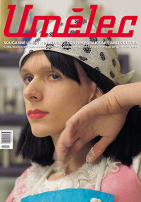






















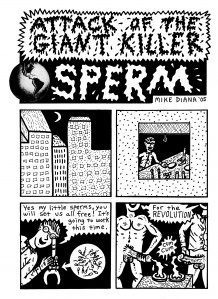




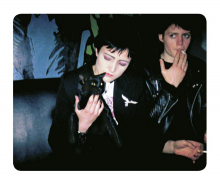
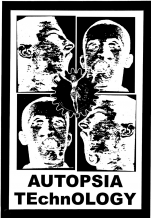
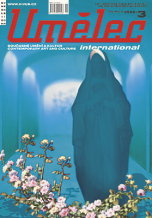



 New book by I.M.Jirous in English at our online bookshop.
New book by I.M.Jirous in English at our online bookshop.
Comentarios
Actualmente no hay comentariosAgregar nuevo comentario